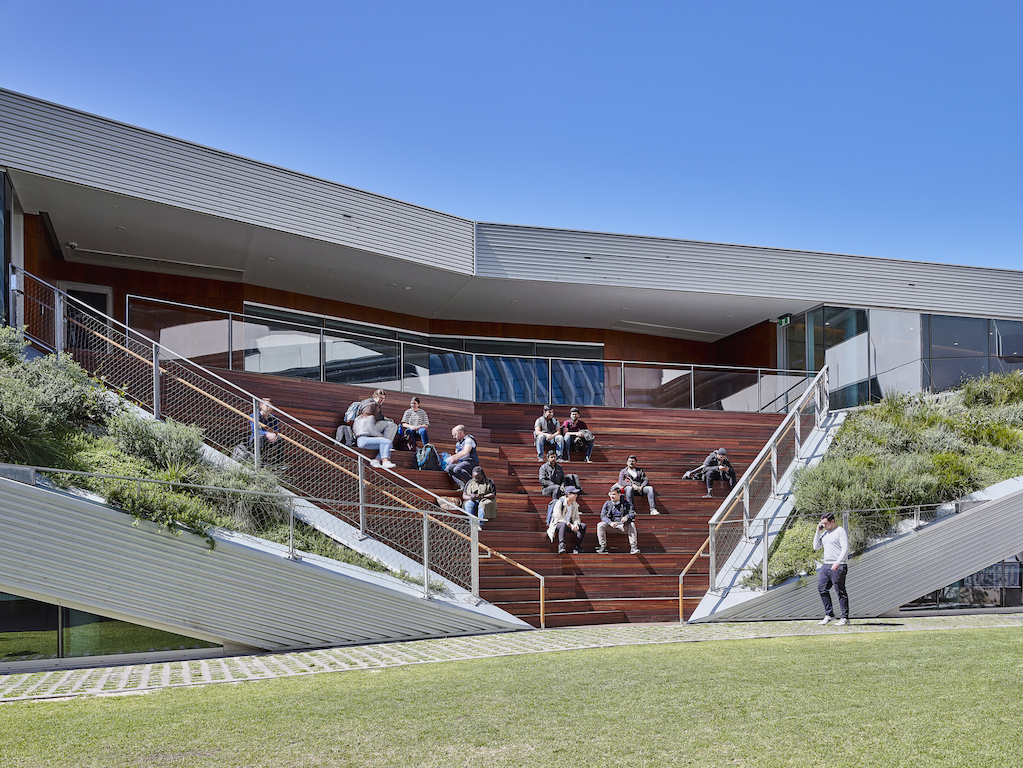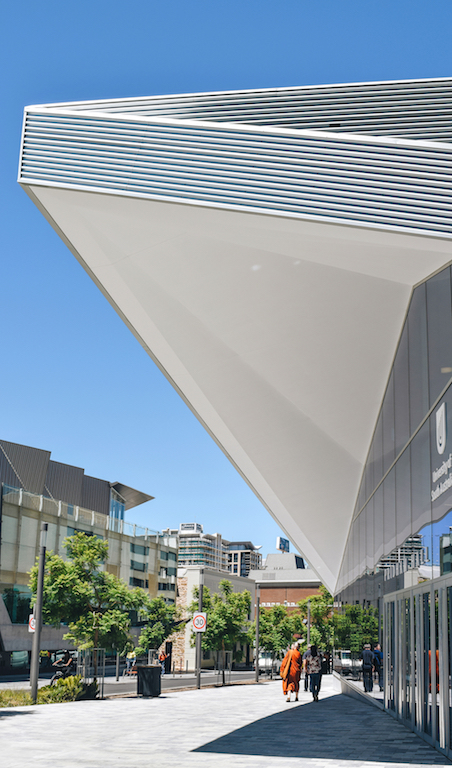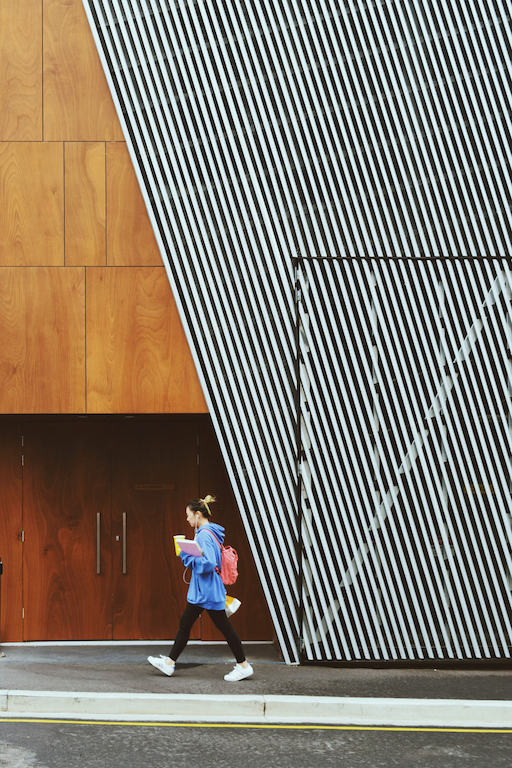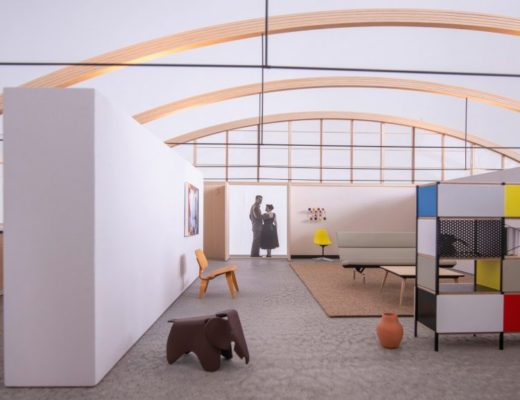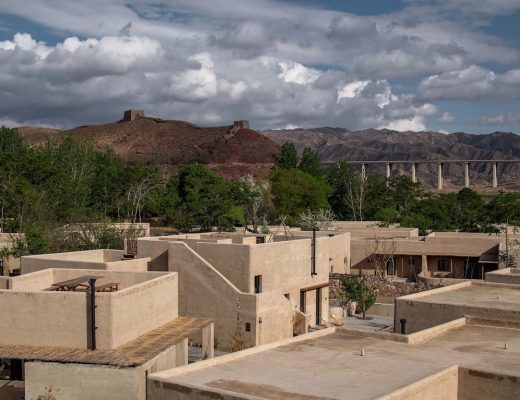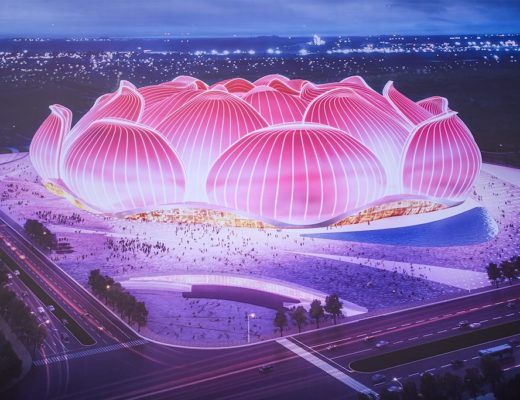Norwegian architecture firm Snohetta, along with JPE Design Studio and Jam Factory, has completed Pridham Hall, student campus for the University of South Australia. The university was founded in 1991 with the merger of the South Australian Institute of Technology and the South Australian College of Advanced Education. By transforming the on-campus student experience and enabling access for the surrounding community, Pridham Hall has become a civic landmark for both the university and the city.
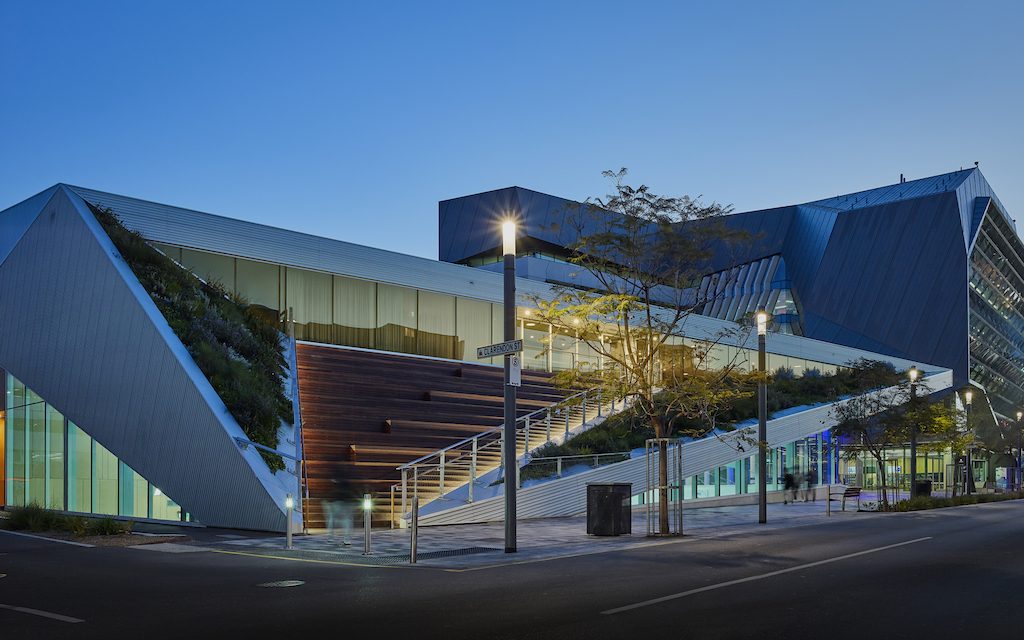 Nestled against the Jeffery Smart Building, this new addition to Adelaide’s west end brings forth the importance of public spaces that engage and inspire connectivity between students, learning and the wider Adelaide community. Pridham Hall also delivers a new comprehensive sporting hub to the university’s City West campus to encourage students’ wellbeing and physical health, while simultaneously providing an on-campus venue for graduations, events and student interaction.
Nestled against the Jeffery Smart Building, this new addition to Adelaide’s west end brings forth the importance of public spaces that engage and inspire connectivity between students, learning and the wider Adelaide community. Pridham Hall also delivers a new comprehensive sporting hub to the university’s City West campus to encourage students’ wellbeing and physical health, while simultaneously providing an on-campus venue for graduations, events and student interaction.
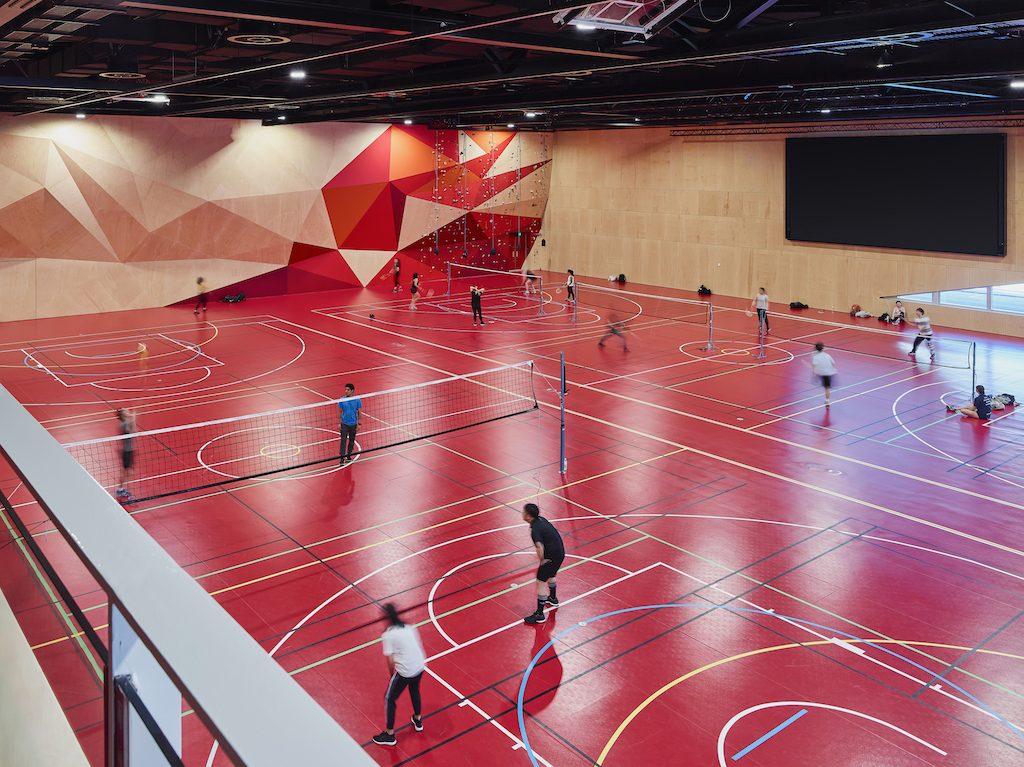 The main features of the building are the hall, a pool, sports facilities, and function spaces, as well as integrated green spaces. By allowing public access to both interior and exterior spaces, the building aims to create a sense of public ownership and community engagement.
The main features of the building are the hall, a pool, sports facilities, and function spaces, as well as integrated green spaces. By allowing public access to both interior and exterior spaces, the building aims to create a sense of public ownership and community engagement.
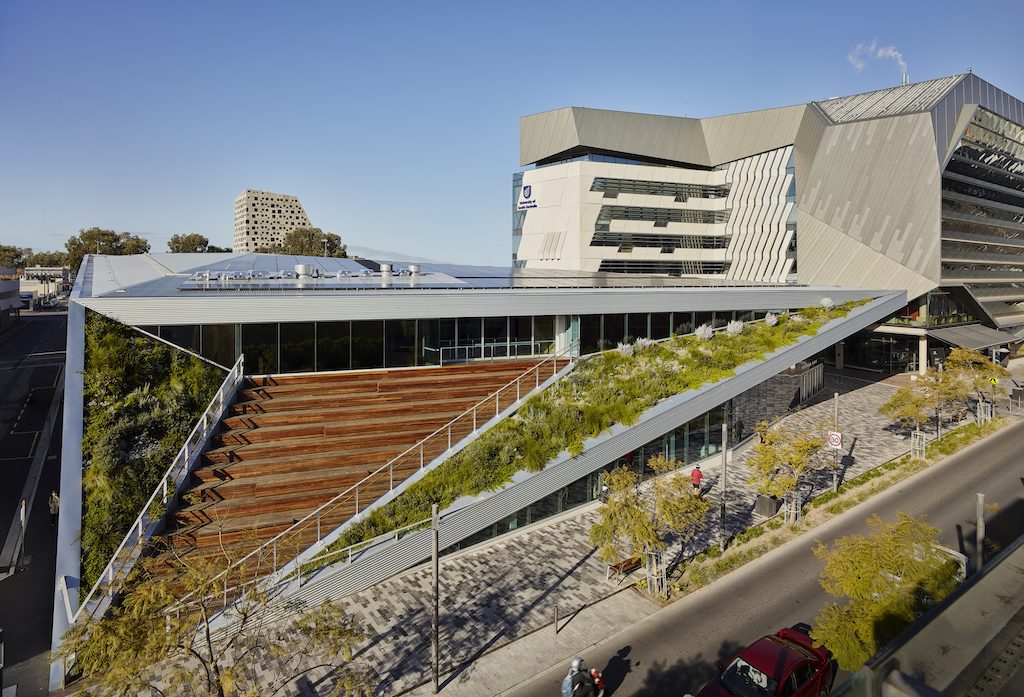 The interaction between the landscape and the building offers passersby a snapshot of the life inside Pridham Hall and creates a welcoming façade to the campus which enhances activity occurring both inside and outside the building. At the north-eastern and western sides of the building, the roof extends down to the street level to create two terraced green recreation spaces, which function as large external public amphitheaters. These flanked “green wings” are designed to produce an eye-catching display of textures and colors, showcasing indigenous plant species from Southern Australia.
The interaction between the landscape and the building offers passersby a snapshot of the life inside Pridham Hall and creates a welcoming façade to the campus which enhances activity occurring both inside and outside the building. At the north-eastern and western sides of the building, the roof extends down to the street level to create two terraced green recreation spaces, which function as large external public amphitheaters. These flanked “green wings” are designed to produce an eye-catching display of textures and colors, showcasing indigenous plant species from Southern Australia.
Creating a dedicated social space, the western amphitheater is integrated with the adjacent buildings with opportunities for outdoor cinema and events. The north-western corner of the building is lifted, highlighting the main entry and Pridham Hall’s connections with the urban realm. The heart of the building is the hall, located on the ground floor.
Differing from traditional academic main halls, this multifunctional space houses both sports activities, events, and ceremonies. Designed with distinct red elements in the draping and patterns on the timber walls, the aesthetics of the hall contrasts the surrounding lobby area, creating an energetic and vibrant space. The 1,600m² hall includes a climbing wall and a student lounge mezzanine at the second level. In addition, the building can also be transformed from a sports hub to an event space for up to 2,000 people.
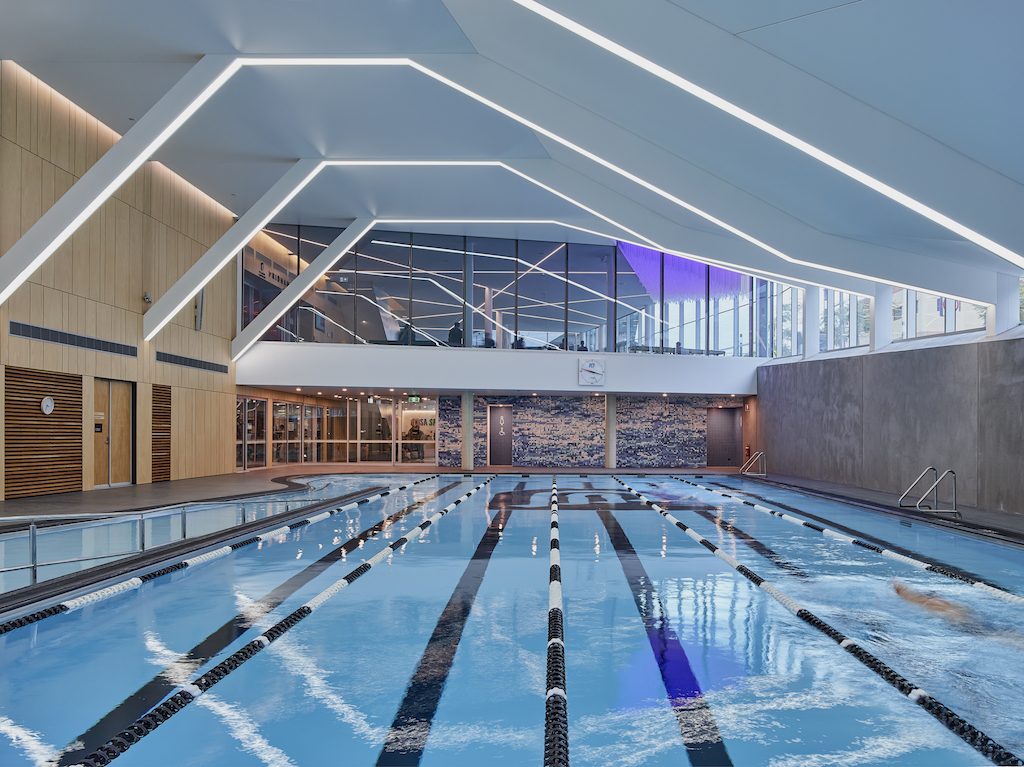 UniSA Sport is situated at the basement level and offers a gymnasium, dance studio, and a unique 25-meter swimming pool. Vertical connection between these spaces and the ground floor is created by the use of glazed voids between the street and the lobby where views and daylight are able to penetrate with maximum effect.
UniSA Sport is situated at the basement level and offers a gymnasium, dance studio, and a unique 25-meter swimming pool. Vertical connection between these spaces and the ground floor is created by the use of glazed voids between the street and the lobby where views and daylight are able to penetrate with maximum effect.
In alignment with UniSA’s target of a 15% reduction in campus-wide carbon emissions by 2021, the project embeds several energy-reducing strategies into the design that are both high and low-tech. The design of Pridham Hall enables natural light to penetrate deep into the building, from the basement level through to level 1, reducing the need for artificial lighting and heating by using efficient passive design features. The ground floor lobby space’s permeable glazed facades open up and allow for natural ventilation, creating an indoor-outdoor space and flexible use. The northern and western lobbies are considered a single internal plaza space, with strong visual and physical connection to the outside, allowing full enjoyment of the warm Adelaide climate.
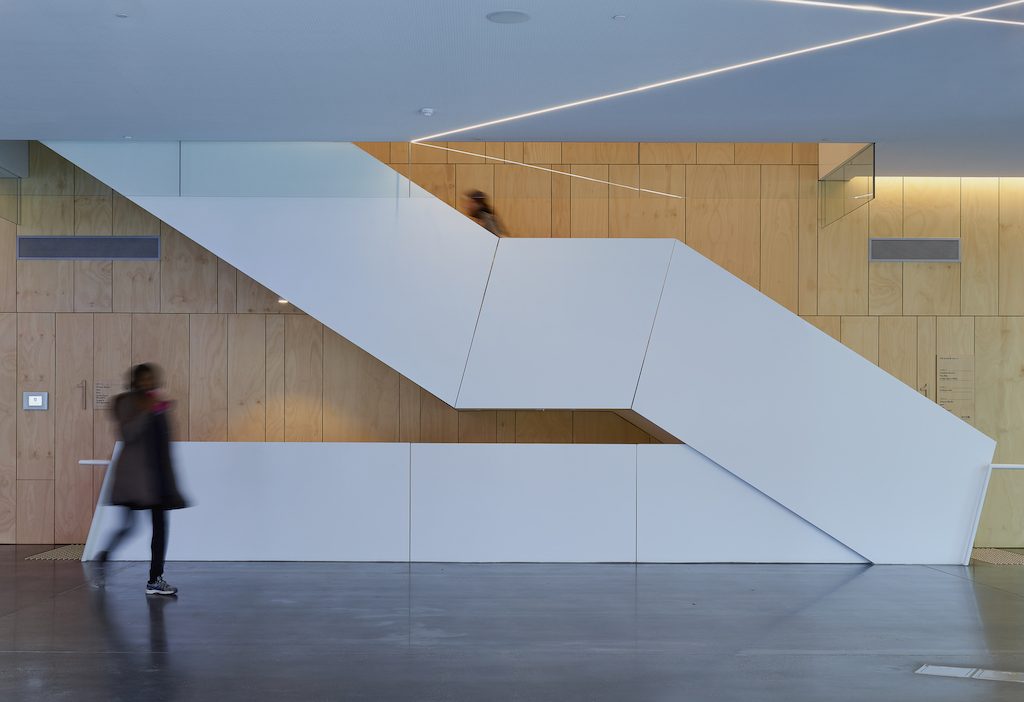 UniSA Pridham Hall has already garnered plenty of recognition since opening last year. It was shortlisted for the 2019 WLA Awards in the “Built Small” category and was awarded the “Award of Excellence” in the SA Landscape Architecture Awards in 2019.
UniSA Pridham Hall has already garnered plenty of recognition since opening last year. It was shortlisted for the 2019 WLA Awards in the “Built Small” category and was awarded the “Award of Excellence” in the SA Landscape Architecture Awards in 2019.
Photos: Mark Syke

